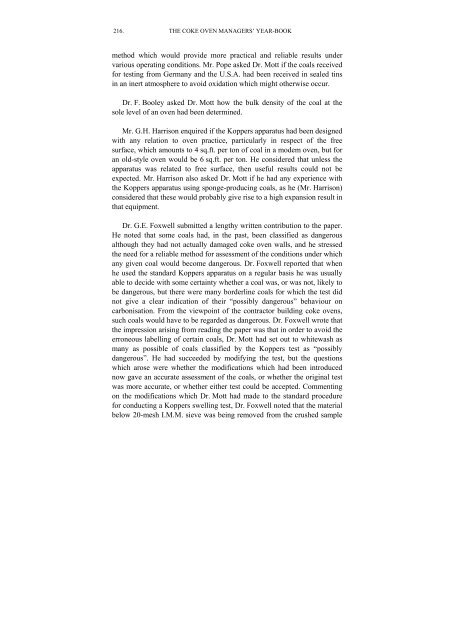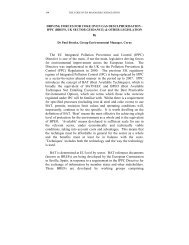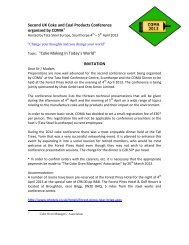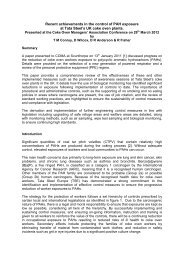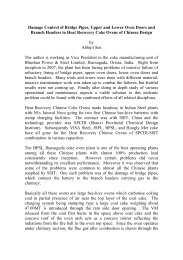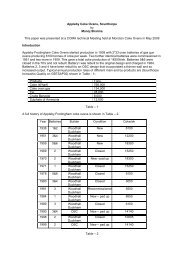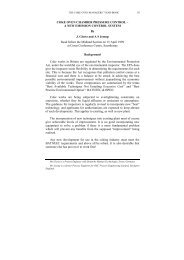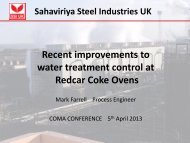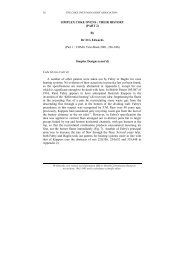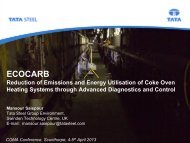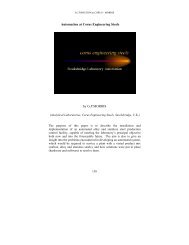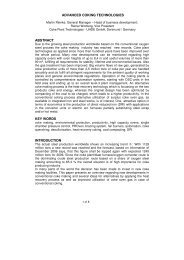CHAIRMAN'S ADDRESS - Coke Oven Managers Association
CHAIRMAN'S ADDRESS - Coke Oven Managers Association
CHAIRMAN'S ADDRESS - Coke Oven Managers Association
- No tags were found...
You also want an ePaper? Increase the reach of your titles
YUMPU automatically turns print PDFs into web optimized ePapers that Google loves.
216. THE COKE OVEN MANAGERS’ YEAR-BOOKmethod which would provide more practical and reliable results undervarious operating conditions. Mr. Pope asked Dr. Mott if the coals receivedfor testing from Germany and the U.S.A. had been received in sealed tinsin an inert atmosphere to avoid oxidation which might otherwise occur.Dr. F. Booley asked Dr. Mott how the bulk density of the coal at thesole level of an oven had been determined.Mr. G.H. Harrison enquired if the Koppers apparatus had been designedwith any relation to oven practice, particularly in respect of the freesurface, which amounts to 4 sq.ft. per ton of coal in a modem oven, but foran old-style oven would be 6 sq.ft. per ton. He considered that unless theapparatus was related to free surface, then useful results could not beexpected. Mr. Harrison also asked Dr. Mott if he had any experience withthe Koppers apparatus using sponge-producing coals, as he (Mr. Harrison)considered that these would probably give rise to a high expansion result inthat equipment.Dr. G.E. Foxwell submitted a lengthy written contribution to the paper.He noted that some coals had, in the past, been classified as dangerousalthough they had not actually damaged coke oven walls, and he stressedthe need for a reliable method for assessment of the conditions under whichany given coal would become dangerous. Dr. Foxwell reported that whenhe used the standard Koppers apparatus on a regular basis he was usuallyable to decide with some certainty whether a coal was, or was not, likely tobe dangerous, but there were many borderline coals for which the test didnot give a clear indication of their “possibly dangerous” behaviour oncarbonisation. From the viewpoint of the contractor building coke ovens,such coals would have to be regarded as dangerous. Dr. Foxwell wrote thatthe impression arising from reading the paper was that in order to avoid theerroneous labelling of certain coals, Dr. Mott had set out to whitewash asmany as possible of coals classified by the Koppers test as “possiblydangerous”. He had succeeded by modifying the test, but the questionswhich arose were whether the modifications which had been introducednow gave an accurate assessment of the coals, or whether the original testwas more accurate, or whether either test could be accepted. Commentingon the modifications which Dr. Mott had made to the standard procedurefor conducting a Koppers swelling test, Dr. Foxwell noted that the materialbelow 20-mesh I.M.M. sieve was being removed from the crushed sample


